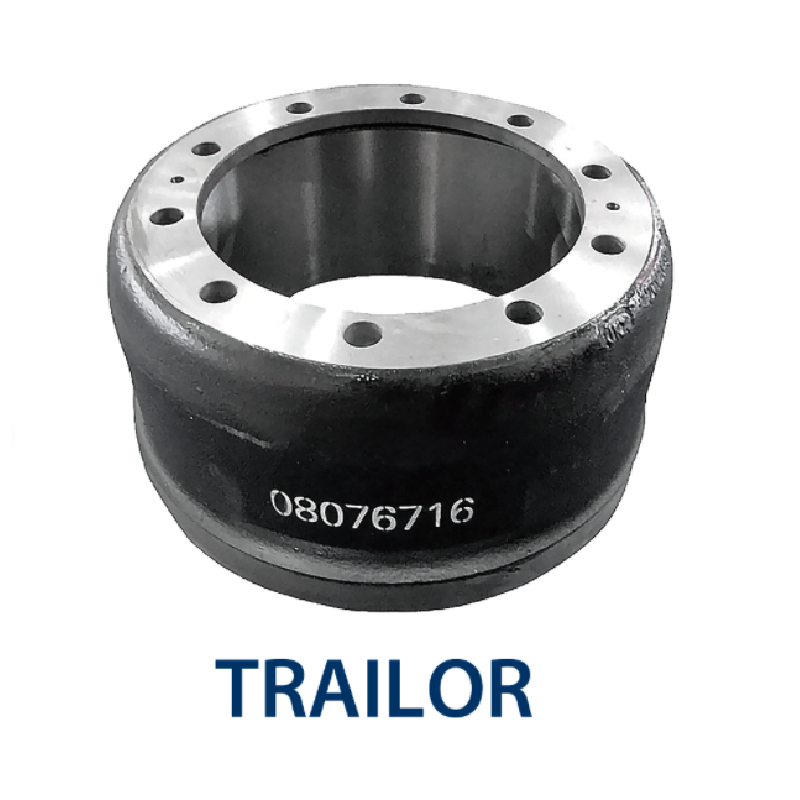Nov . 24, 2024 03:50 Back to list
brake drum vs brake pad
Brake Drum vs. Brake Pad Understanding the Differences
When it comes to vehicle braking systems, few components are as crucial as brake drums and brake pads. Both play vital roles in ensuring the safety and efficiency of a vehicle's braking performance, but they operate in fundamentally different ways. Understanding these components is essential for both drivers and mechanics, as it can influence maintenance practices and the choice of replacement parts.
Brake Pads An Overview
Brake pads are a key component of disc brake systems, which have become the standard in most modern vehicles. These pads are made from a composite material that includes metal shavings, rubber, and other substances, designed to withstand high levels of heat and pressure. When you press the brake pedal, hydraulic fluid is sent to the brake calipers, which in turn, squeeze the brake pads against the brake rotor. This contact creates friction, which slows down or stops the wheel's rotation.
One of the primary advantages of brake pads is their ability to dissipate heat quickly. This characteristic is essential because excessive heat can lead to brake fade, a condition where the braking power diminishes due to overheating. Brake pads typically have a lifespan of 30,000 to 70,000 miles, depending on driving habits and environmental conditions. Signs that brake pads may need replacement include squeaking or grinding noises, reduced braking power, and vibrations when braking.
Brake Drums A Different Mechanism
On the other hand, brake drums are often found in older vehicles or on the rear wheels of some modern cars, especially those designed for transport and utility purposes. A brake drum system consists of a metal drum that rotates with the wheel, along with brake shoes that press against the inner surface of the drum to create friction. When the brakes are engaged, hydraulic pressure forces the brake shoes outward, contacting the drum's inner surface and slowing the vehicle down.
brake drum vs brake pad

Brake drums tend to be less effective than disc brakes, especially under heavy braking conditions or in scenarios where high heat can build up. They are also more prone to warping due to heat, which can lead to pulsation in the brake pedal. However, they have the advantage of being generally cheaper to manufacture and can provide reliable stopping power in less demanding applications. Their lifespan, on the other hand, can vary widely but typically lasts around 30,000 to 60,000 miles, depending on usage.
Comparative Analysis
When comparing brake pads to brake drums, one of the key distinctions is their design and application. Brake pads are typically favored in performance-oriented vehicles due to their superior stopping power and heat dissipation capabilities. In contrast, brake drums are often found in more utilitarian applications where cost efficiency is a priority.
From a maintenance perspective, inspecting and replacing brake pads is generally more straightforward than working with brake drums, which may require additional adjustments, such as re-centering the shoes or dealing with drum wear. Furthermore, modern disc brake setups often incorporate advanced technologies like anti-lock braking systems (ABS), enhancing safety beyond what traditional drum brakes can offer.
Conclusion
In conclusion, both brake pads and brake drums are essential components of vehicle braking systems, each serving specific roles with unique advantages and disadvantages. Understanding the differences between them can aid in making informed decisions regarding vehicle maintenance and repair. For optimal vehicle safety and performance, it's crucial to stay aware of the condition of both braking components and seek replacements when necessary.
-
Scania Brake Drums: OEM Quality for Optimal Safety & Durability
NewsAug.16,2025
-
R.V.I: Advanced Remote Visual Inspection for Precision
NewsAug.15,2025
-
Discover HYUNDA: Innovative Vehicles, Equipment & Solutions
NewsAug.14,2025
-
R.V.I: Unlock Advanced Insights & Real-time Performance
NewsAug.13,2025
-
Kamaz Brake Drum: Durable & Reliable for Heavy Duty Trucks
NewsAug.12,2025
-
Heavy Duty Iveco Brake Drum - Premium Quality & Safety
NewsAug.11,2025
